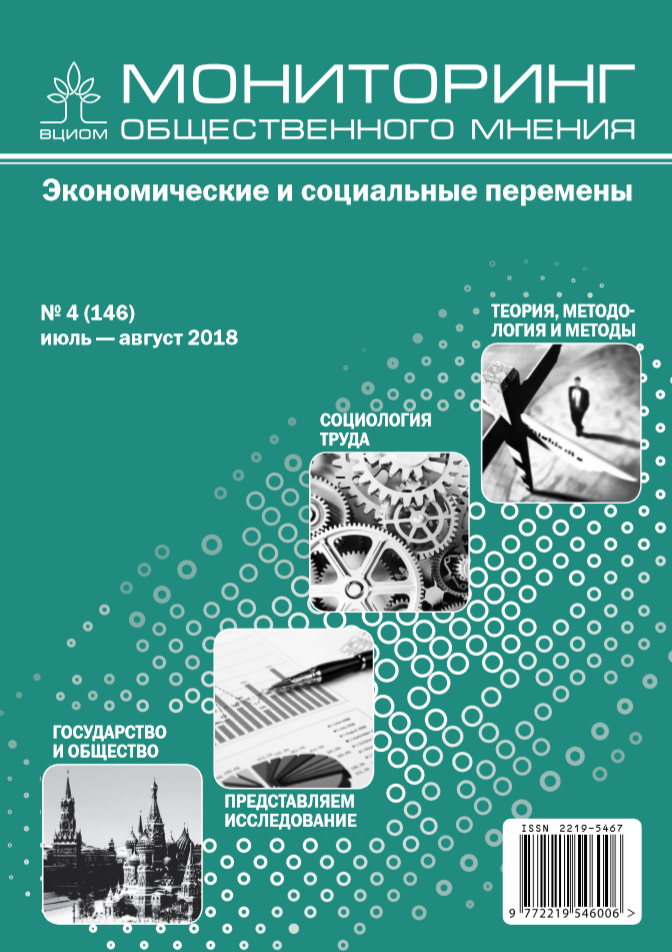Quality of life: main approaches and the notion structure
DOI:
https://doi.org/10.14515/monitoring.2018.4.04Keywords:
quality of life, concept devel‑ opment, concept structure, objective ap‑ proach, subjective approach, integrative approach, capability approachAbstract
The concept of quality of life appeared in the political and academic life in the United States and Western Europe in the mid‑20th century. Initially, the term referred to qualitative aspects of high living standards in the American society. Later, it was used to describe a wide range of social indicators. The intu‑ itive clarity of the term made it extreme‑ ly popular in politics, public discourse and science. Used in many scientific disciplines the concept has undergone transformations under the influence of various theoretical foundations of such disciplines as psychology, sociology, economics, and philosophy. Basic approaches to the study of the concept of quality of life (subjective, objective and capability approach) were formed in the 1970s and 1980s. A new integral approach to the concept of quality of life combines the features of all previous approaches. This new approach was proposed in 2009 in a report submitted by the Commission on the Measurement of Economic Per‑formance and Social Progress headed by the Nobel laureates in economics J. Stiglitz, A. Sen and the French econo‑mist J.-P. Fitoussi. The article is an attempt to answer why the concept of quality of life appeared and what approaches are used to study it. The author provides a detailed struc‑ture of the concept and shows the place of Russia in the list of countries by quality of life rankings according to OECD data.






